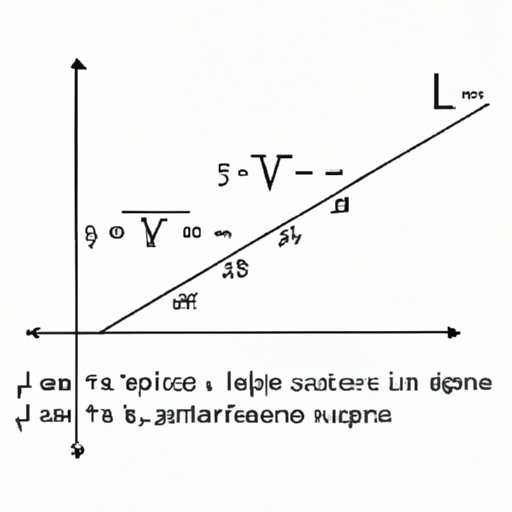
I. Introduction
In mathematics, slope is an important concept that plays a critical role in various fields like calculus, geometry, algebra, and more. It is a measure of how steep a line is, and it allows us to calculate critical variables like the rate of change, direction, and more from a linear equation.
In this article, we will explore the basics of finding slope from an equation, including tips, formulas, and examples. This guide is designed to help people who are new to math or looking to refresh their knowledge of slope.
II. Mastering slope: A beginner’s guide to finding slope from an equation
Before diving into how to find slope from an equation, let’s understand what slope is and how it impacts the representation of a linear equation. Slope represents the angle or steepness of a line. It is calculated by dividing the rise (y) by the run (x) between any two points on the line. In essence, it tells us how far the line moves up or down for each unit of horizontal distance.
Linear equations represent straight lines, and they come in two main forms: slope-intercept form (y=mx+b) and standard form (Ax+By=C). In slope-intercept form, the slope (m) is the coefficient of x, and the y-intercept (b) is the constant term. In standard form, the slope is calculated by rearranging the equation to the form y=mx+b and dividing the constant term by the coefficient of x.
III. Unlocking the mystery: Tips and tricks for calculating the slope of a linear equation
Here are some common tips and tricks you can use to find slope quickly:
- If you have two points on a line, you can use the slope formula (m = (y₂ – y₁)/(x₂ – x₁)) to find its slope.
- If you have an equation in slope-intercept form, the slope is the coefficient of x (m).
- If you have an equation in standard form, rearrange it to slope-intercept form and divide the constant term by the coefficient of x to find the slope.
It is also essential to understand the differences between positive, negative, zero, and undefined slopes to be more accurate in finding slope.
- A positive slope means that the line is moving up and to the right.
- A negative slope means that the line is moving down and to the right.
- A zero slope means that the line is horizontal.
- An undefined slope means that the line is vertical.
IV. Solving for slope: A step-by-step approach to finding slope from any equation
Here are the step-by-step instructions on how to find slope from any linear equation:
- Step 1: Identify the coefficients of x and y in the equation.
- Step 2: Divide the coefficient of y by the coefficient of x to get the slope.
Here’s an example:
Given the equation of a line: y = 2x + 3
- The coefficient of x is 2
- The coefficient of y is 1
- Therefore, the slope is 2/1 = 2
V. Demystifying the process: Breaking down how to find slope from an equation
While finding slope can seem straightforward, there are some common mistakes that people make that can affect the accuracy of their calculations. Here are some tips for avoiding these mistakes:
- Make sure that you are using the correct equation for the line.
- Check your calculations to ensure that you are dividing the correct values.
- Double-check that you have aligned the x and y values correctly. Mixing them up can lead to errors.
VI. Everything you need to know about finding slope from an equation
In summary, finding slope in a linear equation is the process of measuring how steep a line is. To find it, you can use the slope-intercept form or standard form of an equation, calculate it using the slope formula, or apply shortcuts and tips that simplify the process. It is essential to understand the differences between positive, negative, zero, and undefined slopes and avoid common mistakes that can impact your calculations.
VII. Slope made simple: A comprehensive guide to calculating the slope of a line
Calculating slope is not just limited to determining it from an equation. There are several methods and formulas that can help you find the slope of a line quickly and accurately. Some of the common ones include:
- The point-slope formula (y – y₁ = m(x – x₁))
- The two-point formula (m = (y₂ – y₁)/(x₂ – x₁))
- Using a graph or slope triangle to estimate the value of slope intuitively
By applying these methods, you can save time and effort in calculating the slope of a line.
VIII. Slope 101: Understanding how to find slope from any linear equation
Once you have mastered finding slope from a basic linear equation, you can use your knowledge to tackle more complex problems. Understanding how slope works can help you apply it to real-world scenarios like calculating the speed of a car, determining the angle of a ramp, or predicting the growth rate of a company’s revenue.
IX. Conclusion
Slope is a critical mathematical concept that plays a crucial role in several fields. By mastering the art of finding slope from an equation, you can improve your problem-solving skills, increase your accuracy, and become more confident in your math abilities. Remember to practice regularly, avoid common mistakes, and experiment with different types of equations and scenarios to hone your skills.





